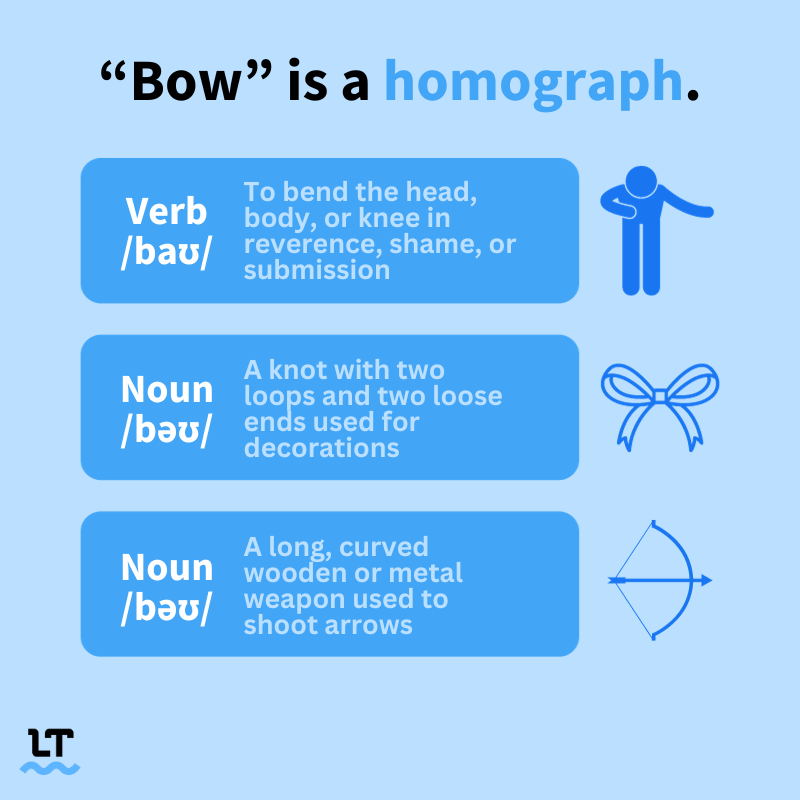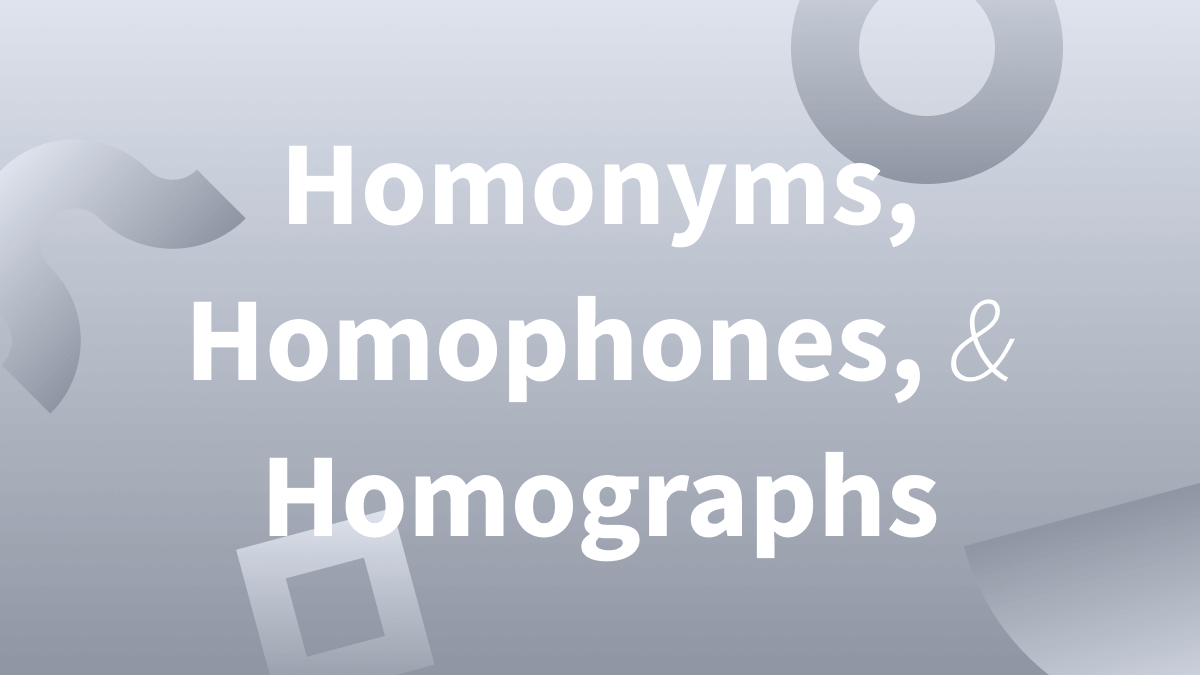Homophones, Homographs, and Homonyms: Quick Summary
- Homophones are words that sound the same but have different meanings and may or may not be spelled differently (by, buy, bye).
- Homographs are words that are spelled the same but have different meanings or pronunciations (bow, referring to the noun and verb).
- Homonyms are both a homophone and a homograph, or either one or the other.
Table of Contents
Homophones, Homographs, and Homonyms… Oh, My!
Chances are that you have an idea about what homophones are, but aren’t too sure about homographs and homonyms. Well, you’re in luck. This post will teach you everything you need to know about these terms by elaborating on their meanings and providing plenty of examples.
Let’s begin!

What Are Homophones?
Homophones are words that sound the same but have different meanings. They can be spelled the same or differently.
An etymological breakdown of the word can help you remember what it means: Homos (ὁμός) is the Greek word for “same,” and phone (φωνή) means “sound.”
A few examples of homophones that are spelled the same are:
Bark /bɑːtk/ (Noun: Cry that comes from certain animals or the outer layer of a tree)
Bark /bɑːrk/ (Verb: To make the characteristic sound of a bark or give orders aggressively)
Plain /pleɪn/ (Noun: An extensive area of flat, tree-less land)
Plain /pleɪn/ (Adjective: Unadorned, not decorated, or simple)
Quail /kweɪl/ (Noun: A type of bird)
Quail /kweɪl/ (Verb: To feel frightened or show apprehension)
Homophones that are spelled differently include:
They’re, there, and their /ðer/
To, too, and two /tuː/
It’s and its /ɪts/
Tail and tale /teɪl/
By, bye, and buy /baɪ/
What Are Homographs?
Homographs are words that are spelled the same but differ in meaning or pronunciation. We already know what homos means, but knowing that graph (γράφω) is the Greek word for writing can help you remember what homographs are.
Homographs that have different pronunciations are called heteronyms and include:
Minute /ˈmɪnɪt/ (Noun: Sixty seconds)
Minute /maɪˈnuːt/ (Adjective: Extremely small)
Tear /tɪr/ (Noun: A drop of liquid secreted from the eye)
Tear /ter/ (Verb: To rip something by pulling it apart)
Lead /led/ (Noun: A chemical element)
Lead /liːd/ (Verb: To go in front of someone or something and guide them in the right direction)

Below you’ll find a few examples of homographs that have identical pronunciations. Please keep in mind that the words can have various meanings that are not listed here.
Ring /rɪŋ/ (Noun: A piece of jewelry worn around a finger)
Ring /rɪŋ/ (Noun: A sound, especially one a phone makes)
Kind /kaɪnd/ (Noun: A group of people with similar characteristics)
Kind /kaɪnd/ (Adjective: Describes someone as gentle, caring, and friendly)
Fan /fæn/ (Noun: A person with a strong interest or admiration for someone or something)
Fan /fæn/ (Noun: A device or apparatus that creates a current of air to create a cooling effect)
What Are Homonyms?
There are two schools of thought when it comes to what homonyms are. Some people view homonyms as a sort of umbrella term that includes both homographs and homophones.
Other people claim that homonyms are those words that are both homographs and homophones. In other words, they’re words that are spelled and pronounced the same but have different meanings—like pitcher the athlete and pitcher the type of container.
In any case, the most important thing to remember is that homophones are words that sound the same but have different meanings. Homographs are words that are spelled the same but mean different things.
Homophones, homographs, and homonyms are one of the most confusing aspects of English and where people tend to struggle the most. LanguageTool—a multilingual spelling and grammar checker—can ensure that you’re always using the right word, whether you’re writing a text message, an email, or a dissertation.

